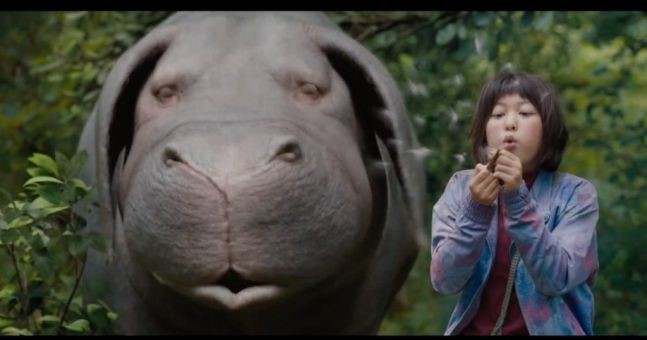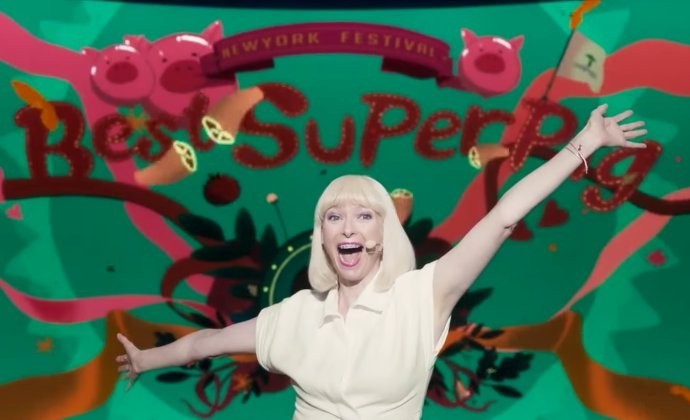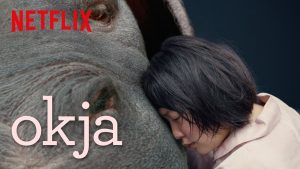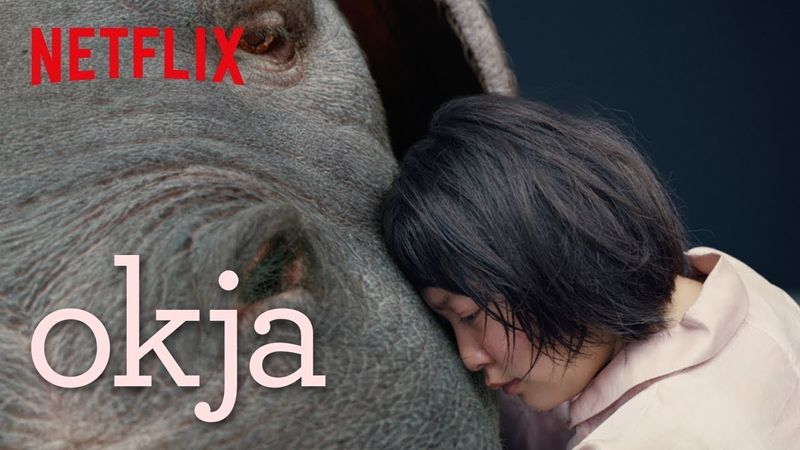
Looking for a way to wind down during the upcoming recess week? Here’s a novel film for your consideration, perhaps to offset any studying-induced frustration! (hur hur)
That aside, Bong Joon-ho’s Okja (2017) was released on Netflix in July this year, with much critical acclaim. As an action-adventure film, it is truly remarkable and one-of-a-kind. Here’s a trailer from Netflix to whet your appetite:
https://www.youtube.com/watch?v=AjCebKn4iic
Without giving too much away, the plot synopsis is as follows: the protagonist Mija is a young Korean girl living on the mountains with her grandfather and the eponymous character, pet super-pig and her best friend, Okja, who was created in a lab as a GMO by a powerful multi-national corporation, the Mirando Corporation years ago as a stunt to increase the favorability of meat products and thereby its global demand. The central conflict of the film arises when Okja is forcibly repatriated to the United States by the Mirando Corporation which created her, having been selected as the most beautiful super-pig among others for a public display. The story chronicles Mija’s journey to reunite herself with Okja, though expectedly, this does not come without price and a certain coming of age, as she soon learns the shocking, barbaric cruelties of the world outside the mountains.
Review
In terms of subject matter, Okja is foremost a simple tale of friendship and gripping loss of innocence. Its central message, that of animal rights and the anti-GMO agenda was also insidiously but cleverly injected into the film. Its cleverness lies in its ability to evoke empathy and warm feelings for the intimate bond between both characters while depicting and juxtaposed against the brutalities of the corporate and animal rights agenda.
The scenes were mostly well executed. The one scene that stood to memory was the slaughterhouse scene: Orwellian, dark and grim, it provoked discomfort and unease for the killing of Okja and other super-pigs, yet the scene was wholly necessary to convey and expose the audience to the brutal realities of the modern slaughterhouse from which we derive much of our consumption of produce from.
However, what separates Okja from other action-adventure films is substance; owing to its unconventional portrayal of setting, subject matter and tone, the film was an absolute adventure and thriller! The director, Bong, made sensible and balanced tonal shifts between its fun, dark, sad, comedic and satirical moments, keeping the audience both titillated by the ongoing action, and thirsting with expectation for where the plot would next transition to. This masterful execution of balance is sadly something most films these days try too hard to force with little to no effect (think ridiculous romance subplots in action blockbusters that are just out of place!). The tonal shifts in Okja, though sometimes unexpected, were simply well calibrated, not abrupt or insensible.


It was also exciting to see familiar villains from film and television which aptly associated dark memories of their previous character portrayals. For example, Tilda Swinton reprises her villainous role as head of the Mirando Corporation in Okja, similar to her antagonistic portrayal of the White Witch in The Chronicles of Narnia: The Lion, the Witch and the Wardrobe (2005). Giancarlo Esposito also takes the role of Lucy Mirando’s sinister adviser in Okja, which triggers memories of his nail-biting performance of Gus Fring, the cold and calculative mob boss, drug lord and owner of a fried chicken store in popular TV series Breaking Bad (2008-13).

Evidently, there is much to rave about Okja and while it is possible to continue extolling the merits of this film, I ought not to spoil the film any more than I already have. So hesitate no further — watch the film, it’s really worth it. Besides, it’s only 120 minutes long!






